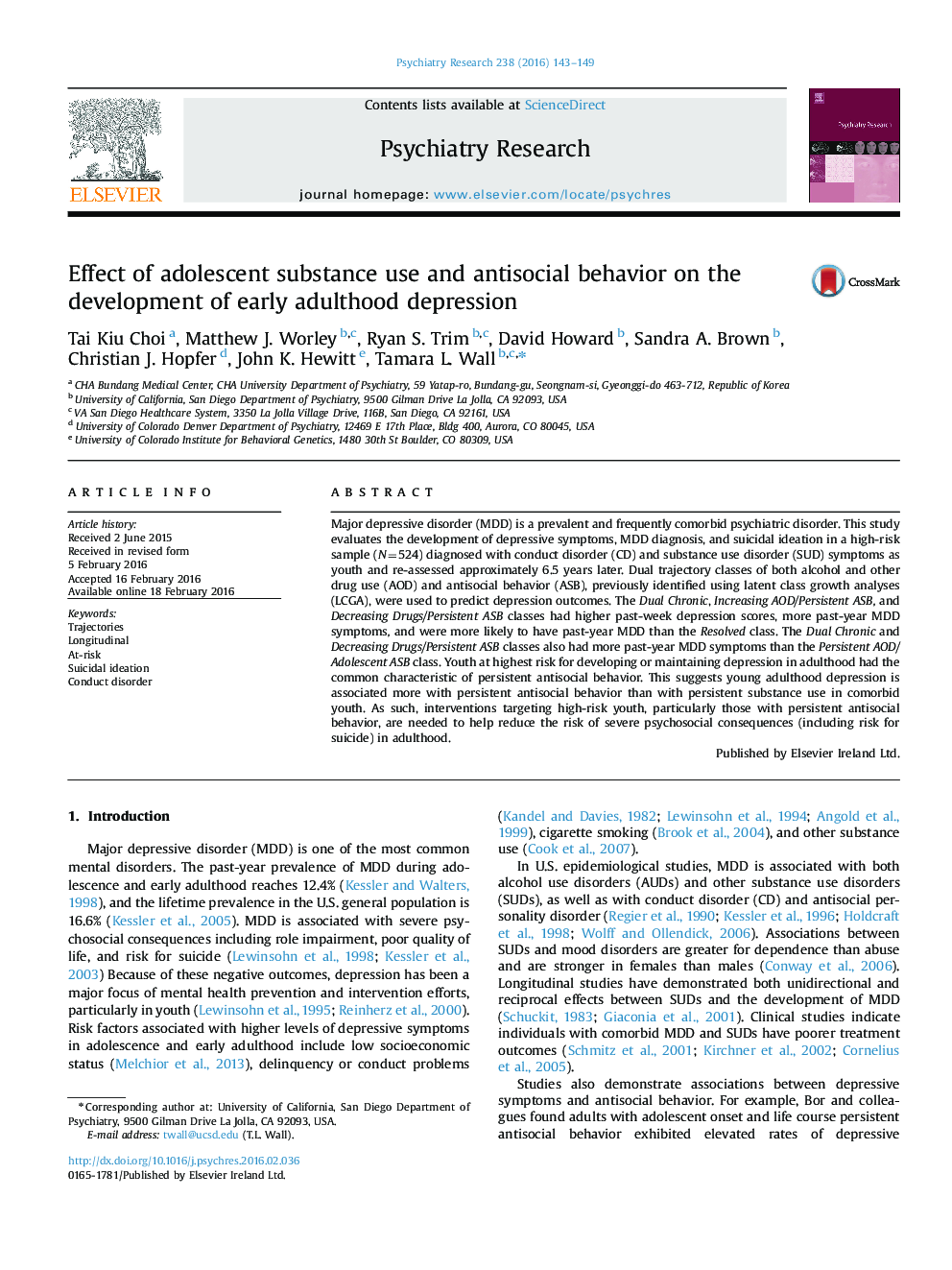| Article ID | Journal | Published Year | Pages | File Type |
|---|---|---|---|---|
| 6813550 | Psychiatry Research | 2016 | 7 Pages |
Abstract
Major depressive disorder (MDD) is a prevalent and frequently comorbid psychiatric disorder. This study evaluates the development of depressive symptoms, MDD diagnosis, and suicidal ideation in a high-risk sample (N=524) diagnosed with conduct disorder (CD) and substance use disorder (SUD) symptoms as youth and re-assessed approximately 6.5 years later. Dual trajectory classes of both alcohol and other drug use (AOD) and antisocial behavior (ASB), previously identified using latent class growth analyses (LCGA), were used to predict depression outcomes. The Dual Chronic, Increasing AOD/Persistent ASB, and Decreasing Drugs/Persistent ASB classes had higher past-week depression scores, more past-year MDD symptoms, and were more likely to have past-year MDD than the Resolved class. The Dual Chronic and Decreasing Drugs/Persistent ASB classes also had more past-year MDD symptoms than the Persistent AOD/Adolescent ASB class. Youth at highest risk for developing or maintaining depression in adulthood had the common characteristic of persistent antisocial behavior. This suggests young adulthood depression is associated more with persistent antisocial behavior than with persistent substance use in comorbid youth. As such, interventions targeting high-risk youth, particularly those with persistent antisocial behavior, are needed to help reduce the risk of severe psychosocial consequences (including risk for suicide) in adulthood.
Related Topics
Life Sciences
Neuroscience
Biological Psychiatry
Authors
Tai Kiu Choi, Matthew J. Worley, Ryan S. Trim, David Howard, Sandra A. Brown, Christian J. Hopfer, John K. Hewitt, Tamara L. Wall,
